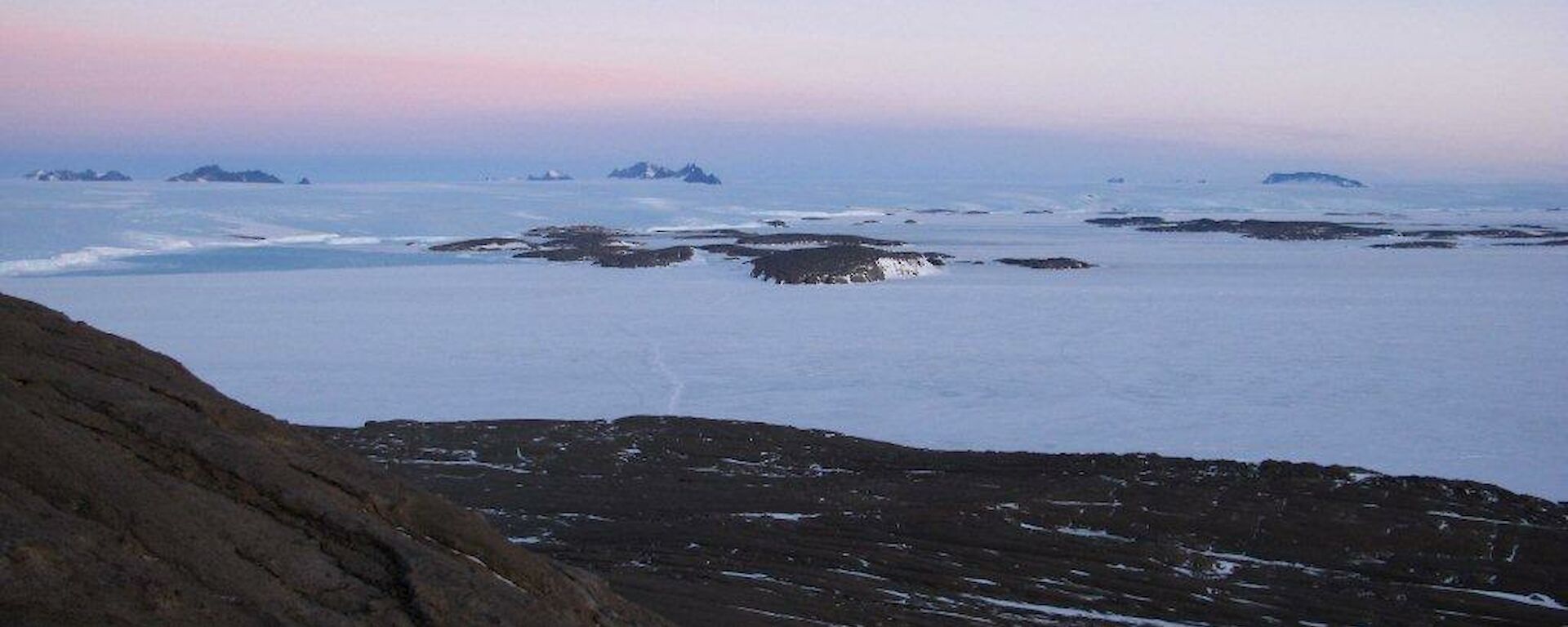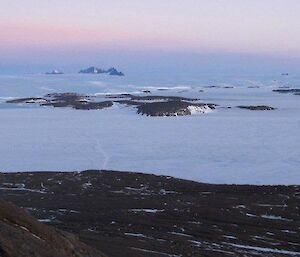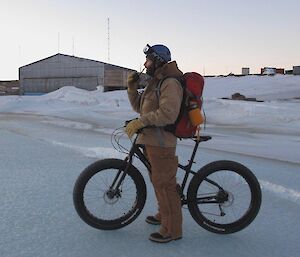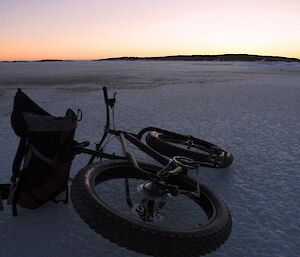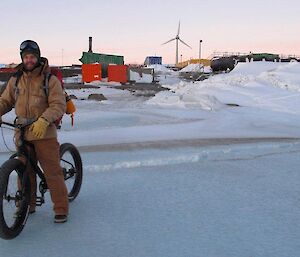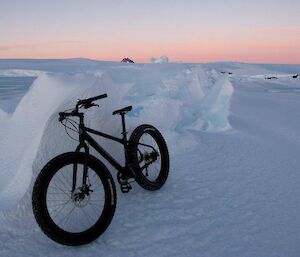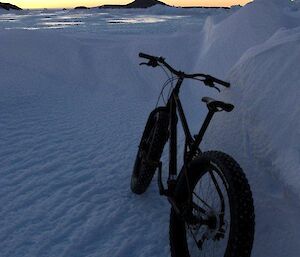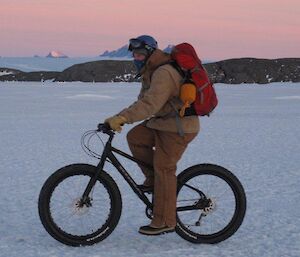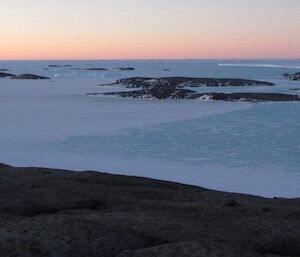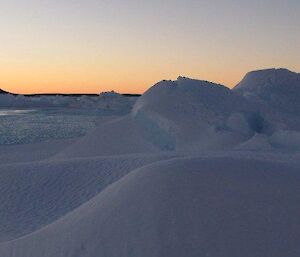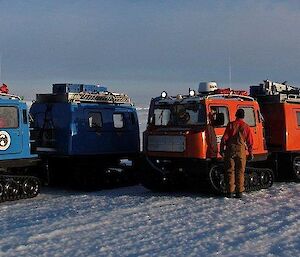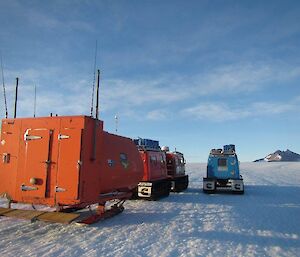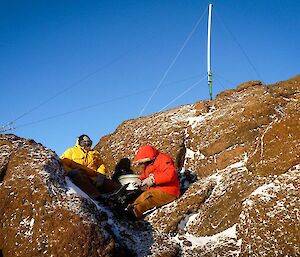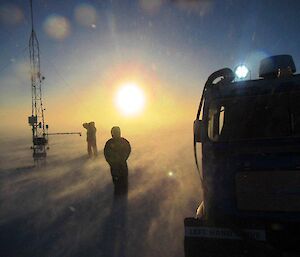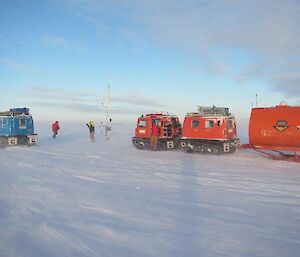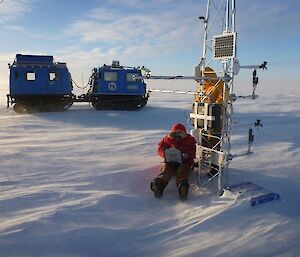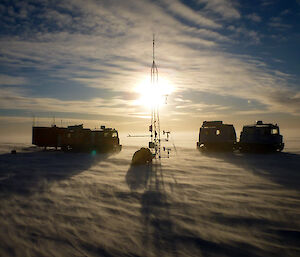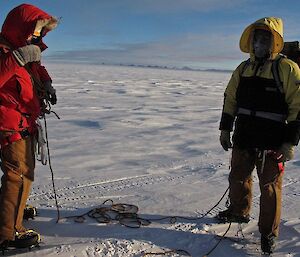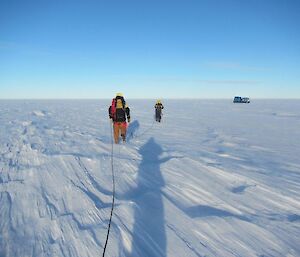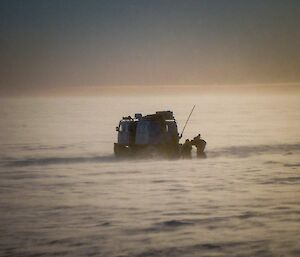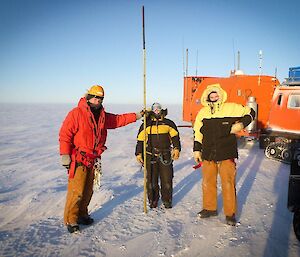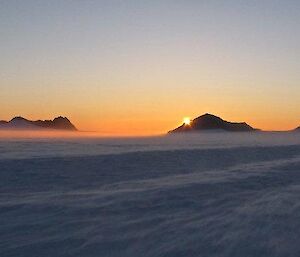While friends were spending the weekend back in NZ mountain biking I was also able to say I was doing the same. Well, kind of.
Our daylight hours are favourable to be heading out and enjoying the last of the sun’s rays here at Mawson. It was a refreshing −25°C and light winds from the South East when James and I headed out mountain biking to Welch Island for a few hours. Welch Island rises 130 metres and around six kilometres from Mawson station over the sea ice (which is currently over one metre thick). It is a prominent hill that is often talked about around a meal.
Welch Island was discovered 14 February 1931 by the British, Australia and New Zealand Antarctic Research Expedition (BANZRE), and is named after B.F Welch, the Second Engineer on the RSS Discovery.
You may be sitting at home thinking “Are these guys crazy?”. I often liken the temps down here to a cold, clear frosty winter’s day back in New Zealand. When there is little to no wind here, −25°C can feel not too far off a −2°C frosty morning back in New Zealand. I know you probably still don’t believe me… Anyway, we were off mountain biking out to Welch Island with the plan to park up our bikes and climb to the top of our ‘local hill’. The bikes we have down here arrived on voyage six with us, and they sport some rather fat tyres which prove ideal on the sea ice.
It was great to be moving along under a different mode of transport. The surface changed from grippy ice, to blue and then to a lumpy, bumpy grippy surface. All the while the views were fantastic and distracted us from any discomfort. It was nice to be walking on the rock and heading to another ‘scenic lookout’ where we were rewarded with a moon rising on one side and the final rays of the sun disappearing below the horizon — with that comes some amazing colours that a photo will never do justice. The wind picked up enough to spur us back down to our bikes — we stole glances back to the moon which grew more iridescent as we put the kilometres behind us.
Winter is here at Mawson: the sun sits below the horizon, but there is still plenty to do outside and the weekends are rolling around quickly. Ahh, it’s just like a cold frosty day in New Zealand!
Heidi Godfrey

